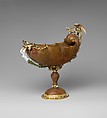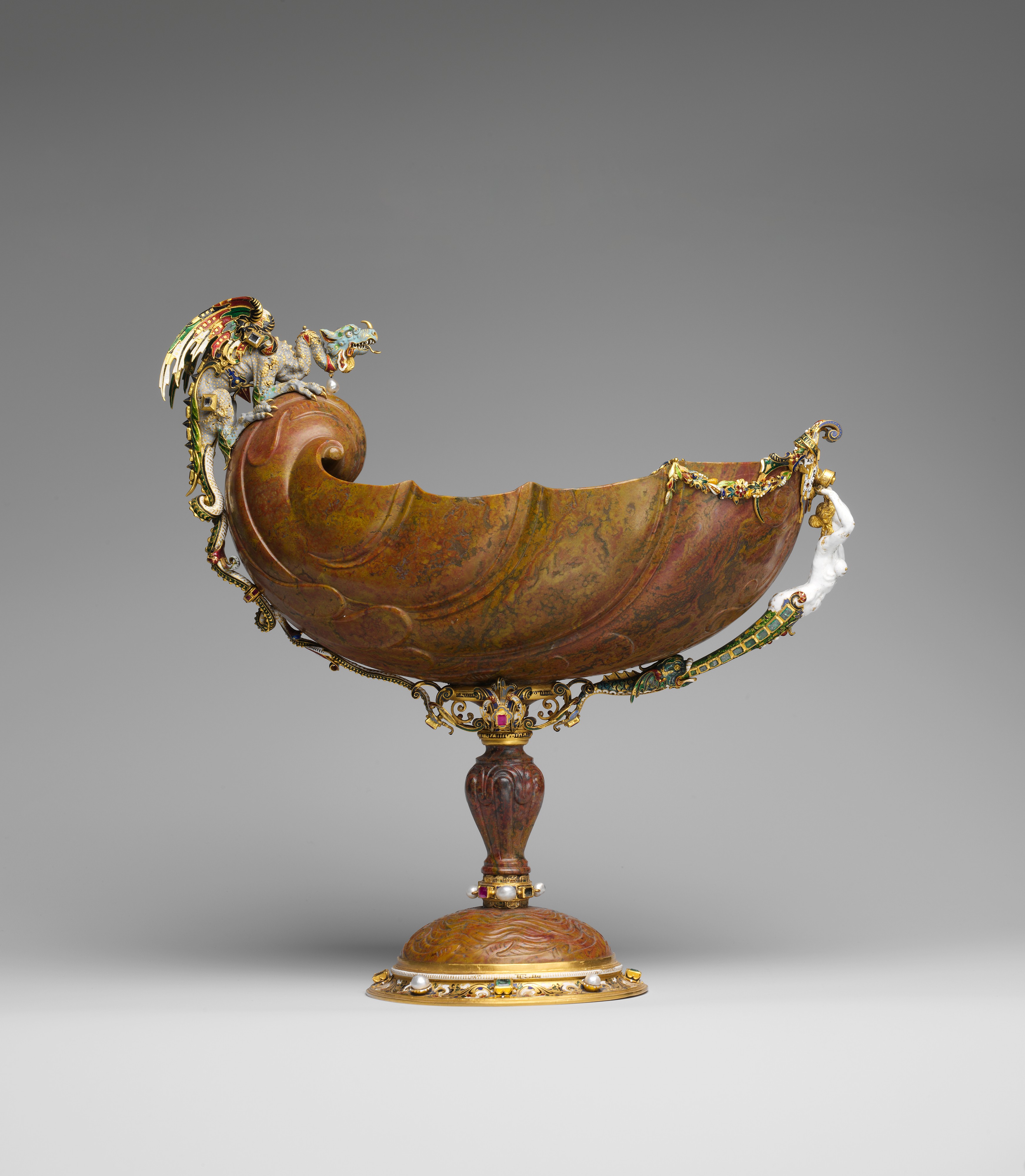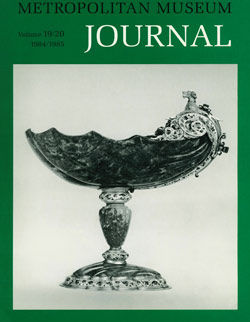Standing cup
Probably after a design by Reinhold Vasters German
Not on view
Although believed to have been made in France, this standing cup was possibly inspired by drawings by the South German (Aachen) goldsmith Reinhold Vasters (1827–1909), who in turn had looked to the lapidary and goldsmiths' work of the sixteenth-century Mannerists. A mature style of the Renaissance, Mannerism reached its height in German and Dutch decorative arts and, like the other "antique" styles, was imitated in the nineteenth century. Mannerism frequently employed grotesque decoration and contorted, exaggerated forms that were readily adapted to metalwork. The cup of carved jasper is set with a fantastic and bejeweled dragon further enameled in gray, blue, green, red, blue, and white, and an enameled mermaid with gold hair issuing from the mouth of a dolphin. The cup is also ornamented with precious stones and enameled with garlands and scrolls. Exotic specimens, such as coconut shells and hardstones found in nature, were prized in the sixteenth and seventeenth centuries and inspired goldsmiths to create ornate gold mounts decorated with enamel and encrusted with jewels.
Due to rights restrictions, this image cannot be enlarged, viewed at full screen, or downloaded.
This artwork is meant to be viewed from right to left. Scroll left to view more.




